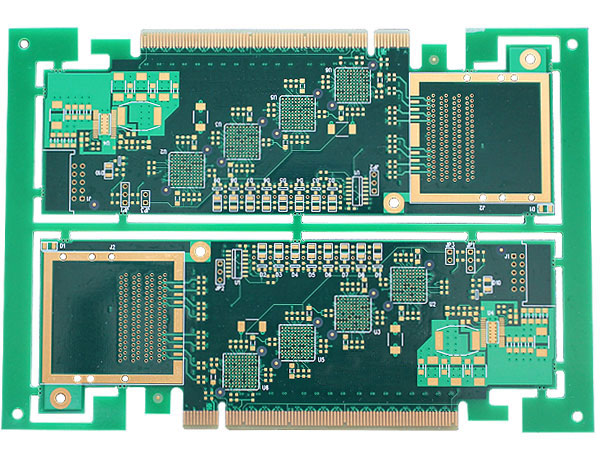Consumer electronic products refer to audio and video products used for personal and home use in connection with radio and television, mainly including: television sets, video disc players (VCD, SVCD, DVD), video recorders, camcorders, radios, tape recorders, combination stereos, gramophones, and laser disc players (CDs), and so on. With the development of market demand, the telephone, personal computer, home office equipment, home electronic health care equipment, automotive electronics, etc.
●With the gradual development of intelligent products in the direction of lighter, thinner and more intelligent applications, higher requirements have been put forward for display technology, data transmission machine processing capacity, and the diversification of uses and the thinning of the volume has also prompted the printed circuit board to arrange more wires in a limited area, and constantly develop in the direction of ultra-refinement, such as fine line width, dense wiring, and fine craftsmanship.
We have rich experience in the production of HDI PCB products.

●4 key differences between HDI and regular PCBs
1、HDI is smaller and lighter in weight.
HDI board is a traditional double-sided board as the core board, through the continuous accumulation of layers. This way by the continuous accumulation of layers of circuit boards is also known as the accumulation of multilayer board (Build-up Multilayer, BUM). Compared to conventional circuit boards, HDI circuit boards are "light, thin, short, and small".
The electrical interconnection between the layers of HDI is achieved through conductive through holes, buried holes and blind holes, which are structurally different from ordinary multilayer circuit boards, and HDI boards use a large number of micro-embedded blind holes. HDI uses direct laser drilling, whereas standard PCBs are usually mechanically drilled, so the number of layers and the aspect ratio tends to be reduced.
2, HDI motherboard production process
HDI board high-density is mainly reflected in the hole, line, pad density, interlayer thickness of these points.
※Micro-conductor holes: HDI boards contain blind holes and other micro-conductor hole design, which is mainly expressed in the aperture diameter of less than 150um micro-hole into the hole technology and cost, production efficiency and hole precision control and other aspects of the high demand for the chemical. Conventional multilayer circuit boards only have through holes and no tiny buried blind holes.
※ line width and line spacing refinement: its main performance in the wire defects and wire surface roughness requirements are becoming more and more stringent. General line width and line spacing does not exceed 76.2um.
※ High density of welded discs: the density of welded joints per square centimetre is greater than 50.
※ Thin dielectric thickness: This is mainly manifested in the interlayer dielectric thickness to 80um and below, and the requirements for thickness uniformity are becoming more and more stringent, especially for the characteristic impedance control of high-density boards and packaging substrates.
3, HDI boards have better electrical performance
HDI not only allows end-product designs to be more compact, but also meets higher standards of electronic performance and efficiency at the same time.
HDI increased interconnect density allows enhanced signal strength and improved reliability. In addition, HDI board for radio frequency interference, electromagnetic wave interference, electrostatic discharge, heat conduction, etc. has a better improvement. HDI also uses full digital signal process control (DSP) technology and a number of patented technologies, with a full range of adaptive load capacity and strong short-term overload capacity.
4, HDI board on the buried hole plug hole requirements are very high
As can be seen from the above, whether it is the volume of the board, or electrical performance, HDI are better than ordinary PCB a chip. Where there are two sides of the coin, HDI's other side is as a high-end PCB manufacturing, its manufacturing threshold and process difficulty are much higher than ordinary PCB, production issues to be noted more - especially buried holes plug holes.
Currently HDI manufacturing core pain points and difficulties is buried holes plug holes. If the HDI buried holes plug holes are not done, there will be major quality problems, including uneven board edges, uneven media thickness, pads have pitted state.
※ The board surface is not flat, the line is not straight in the depression caused by the beach phenomenon, which will cause the line gap, broken line and other defects.
※Characteristic impedance may fluctuate due to uneven dielectric thickness, resulting in unstable signals.
※ Unevenness of the pads can lead to poor quality of the subsequent package, resulting in the loss of components.
Contact: Ella Ouyang
Phone: 86-13570888065
Tel: 86-0755-28632299
Email: ellaouyang@szxpcba.com
Add: Building 8, Gangbei Industrial Zone, Huangtian, Xixiang, Bao’an District, Shenzhen, China.
We chat
